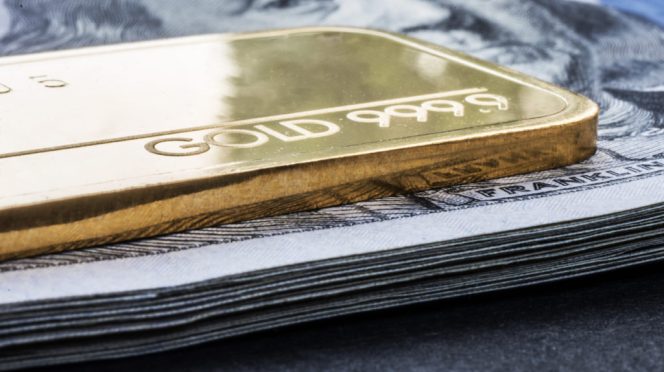Gold taking over euro in importance. Stock image.
Beaver Creek, Colorado – Canadian dealmaker Frank Giustra says the age of paper gold is ending as BRICS nations stand up a parallel financial system that routes around the U.S. dollar and prizes deliverable metal.
“We’re now, believe it or not, in the era of hard money,” Giustra said Tuesday in a conversation with Alex Deluce of the Ontario-based bulletin Gold Telegraph at the Precious Metals Summit. “If you own paper gold, you do not own gold. When the crunch comes, it will not be there.”
China and partners among the BRICS (Brazil, Russia, India, China and South Africa) nations are building a system to mirror Western finance. It spans payments, settlement, depositories, ratings and swap lines – all outside the dollar. It downplays paper gold, products like gold exchange-traded funds, sovereign gold bonds and gold futures that represent a stake in gold’s value without physically possessing the metal.
Giustra, a member of the Canadian Mining Hall of Fame, pointed to yuan-for-gold convertibility on the Shanghai Gold Exchange, new physical-delivery vaulting in Hong Kong and plans for more warehouses abroad.
“It basically puts (global financial messaging network) SWIFT back into the stone age,” he said.
De-dollarization
Record bullion prices this week underscore Giustra’s argument that physical gold is eclipsing paper contracts as the true measure of value. With central banks hoarding metal and governments testing non-dollar payment systems, the shift points to a world where gold miners with scalable ounces and low costs stand to benefit while traditional currencies and leveraged financial products come under strain.
U.S. President Donald Trump using tariffs as political weapon has sped a global split into rival trading camps. Half the world is pushing trade and savings towards non-dollar channels, the serial entrepreneur said.
“A lot of people think the administration is playing 3D chess,” said Giustra, a financier known for founding Wheaton River Minerals and helping launch Goldcorp into a major producer. “I just don’t see it.”
A key BRICS plank, he said, is the cross-border central bank digital currency pilot often called mBridge. It was launched by China, Hong Kong, Thailand and the United Arab Emirates with Saudi Arabia recently joining. It lets participants settle in local currencies rather than dollars. Against that, he set out a U.S. path that leans on dollar stablecoins, digital tokens backed by short-term Treasuries.
“MBridge and stablecoins are competing forces,” Giustra said. Stablecoins, as designed, create “a way to stuff additional Treasuries into virgin pockets that never existed before.”
In his scenario, once enough debt sits inside those reserves, Washington could devalue the dollar, knocking holders of cash and dollar stablecoins while pushing hard assets like gold and metal producers higher.
Miners’ fillip
If physical delivery increasingly sets the clearing price, bullion premiums (the additional cost above benchmark spot prices that buyers must pay to secure real, deliverable ounces) and mine supply become the real constraints. It’s a setup that favours producers with scalable ounces and low costs while challenging leveraged paper products and bank trade desks, Giustra said. For investors, custody, convertibility and geopolitics matter as much as interest rates.
Heavy public debts and politics point to lower short-term rates, higher long-term yields and the return of quantitative easing or yield-curve control to cap borrowing costs – a path that weakens fiat currencies over time versus physical gold, he said.
“Fiat currencies in general are in their death throes,” Giustra said. “There is a global monetary reset coming. How it manifests itself, who knows, and whether it’s done peacefully or with a war, who knows.”
‘National security’
If the dollar’s reserve role slips, he added, the U.S. could face inflation, higher rates and a lower standard of living. “It’s a national security issue.”
Giustra framed the stablecoin-and-devaluation path as a scenario, not a forecast. MBridge remains a pilot and policy choices in Washington and Beijing will determine how far and how fast any shift runs.
Giustra traced the current gold run to a third stage of a bull market that began after 1971 and, in his framing, reignited when gold broke $1,900 an oz. in 2020. Central banks are repatriating bullion and prioritizing control of gold bars.
“Everybody’s scrambling to get physical gold onto their own territory,” he said. “This time is going to be chaotic.”














